Physical Address
304 North Cardinal St.
Dorchester Center, MA 02124
Physical Address
304 North Cardinal St.
Dorchester Center, MA 02124
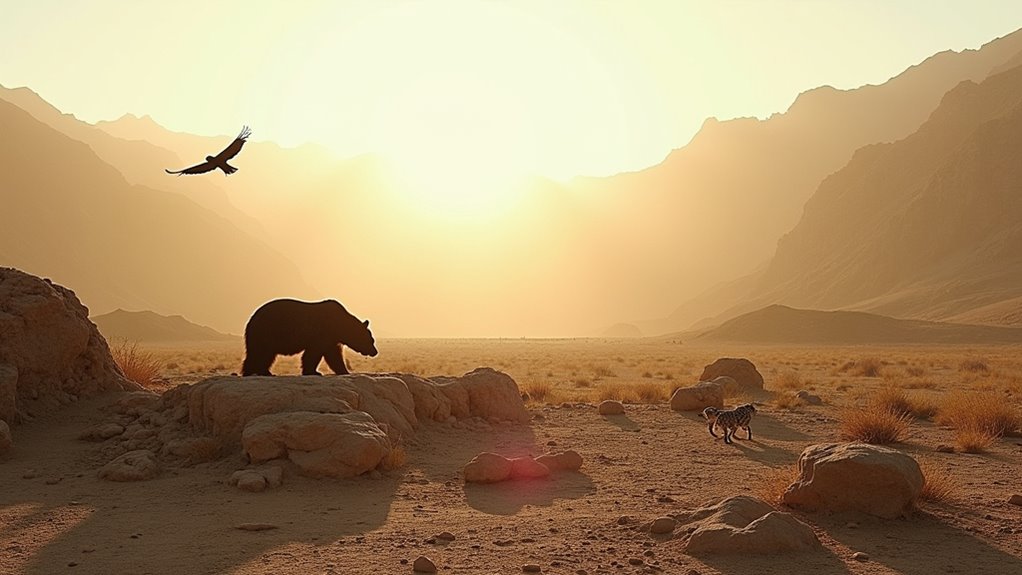
While venomous vipers and predatory bears lurk throughout Afghanistan, these eight deadly creatures pose threats that might surprise even seasoned travelers.
Afghanistan’s most dangerous animals include the saw-scaled viper, deathstalker scorpion, Russell’s viper, Asiatic black bear, carpet viper, Persian horned viper, snow leopard, and Asian sand viper. You’ll encounter venomous reptiles hiding under rocks or hunting at night, while predatory mammals like bears and snow leopards pose threats in mountainous regions. These creatures cause symptoms ranging from severe pain and hemorrhaging to life-threatening injuries. Understanding their behavior and habitats could mean the difference between safety and peril.
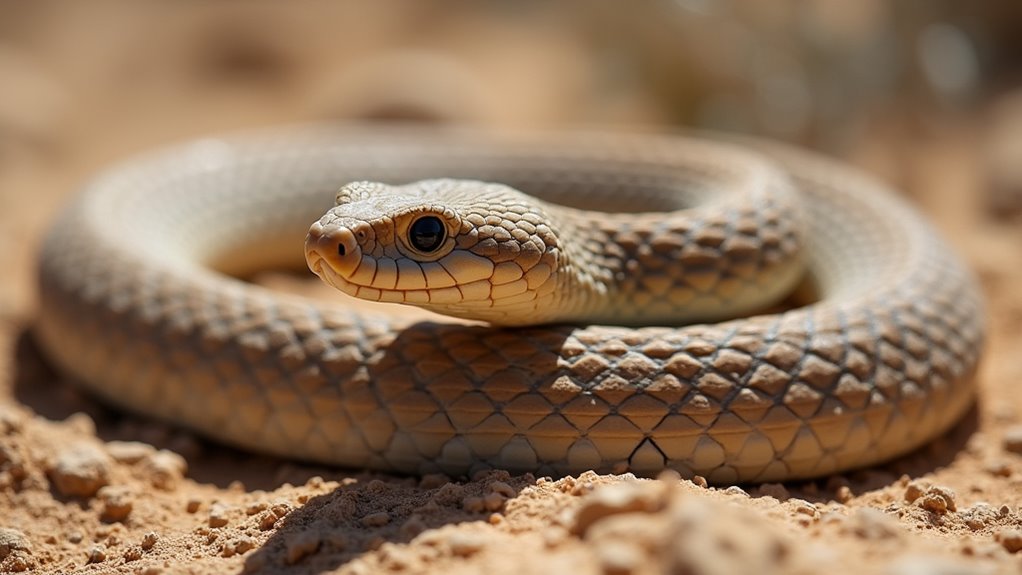
Although small in size, the saw-scaled viper ranks among Afghanistan’s deadliest creatures, causing numerous fatalities each year in rural communities. Found throughout southern Afghanistan, this venomous snake prefers arid and semi-arid environments, hiding under rocks in sandy or scrubland areas. Venomous Snakes In Africa are also known to inhabit similar environments.
You’ll recognize this killer by its tan to grayish-brown body marked with whitish blotches and distinctive dark spots. The saw-scaled viper often displays a distinctive cruciform pattern on its head that resembles a cross or trident mark. Active primarily at night, you’re most likely to encounter one after dark when they’re hunting.
Their highly toxic hemotoxic venom causes severe tissue damage and blood disorders. If you’re bitten, you’ll need immediate antivenom treatment—a challenge in remote regions where these snakes often strike.
Their camouflage and secretive nature make them particularly dangerous as you mightn’t see them until it’s too late.
Why is a creature barely three inches long considered one of Afghanistan’s deadliest inhabitants? The deathstalker scorpion packs a venom potent enough to kill children, the elderly, and those with medical conditions. Its yellowish appearance might seem unassuming, but don’t be fooled.
You’ll find these dangerous arachnids lurking in Afghanistan’s arid regions, where they hide in burrows during scorching days. Their venom contains powerful neurotoxins like chlorotoxin that target the nervous system and can cause severe reactions. If you’re stung, you’ll face severe pain, increased heartbeat, high blood pressure, and potentially convulsions or coma.
Venomous snakes are also a significant threat in Afghanistan. While antivenom exists, quick medical attention is essential—a challenging prospect in remote Afghan areas. When exploring the country’s deserts, exercise extreme caution to avoid an encounter with this tiny yet formidable predator that locals know as the Palestine yellow scorpion.
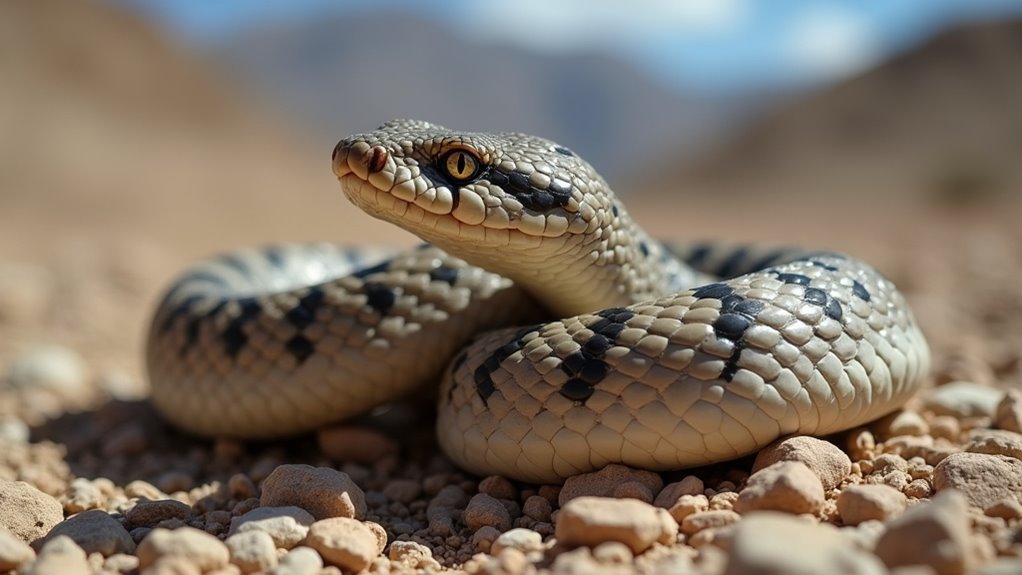
While scorpions represent a small yet deadly threat in Afghanistan, the Russell’s viper stands as one of the region’s most dangerous serpents. Found throughout neighboring Pakistan, this viper thrives in Afghanistan’s open grasslands and rural settlements.
You’ll recognize this solitary predator by its stout body, flat head, and characteristic S-shaped defensive posture. When threatened, it raises its head, emits a remarkably loud hiss, and can become extremely aggressive before striking.
The Russell’s viper hunts rodents primarily at night, making human encounters more likely in rural and urban areas where mice and rats abound. Alexandria, located in Egypt, is also known for its serpent population. Medical professionals use its venom in specialized blood clotting tests to detect certain clotting disorders.
Its highly toxic venom causes severe pain, hemorrhaging, and potential kidney failure if left untreated.
Avoid dense vegetation where these vipers hide during daylight hours, and seek immediate medical attention if bitten, as specific antivenom exists.
Towering above most animals in Afghanistan’s mountainous regions, the Asiatic black bear represents a formidable predator you’d want to avoid at all costs. Identified by their distinctive white V-shaped chest mark, these powerful climbers frequent forested areas and can weigh up to 200 kg.
If you encounter one of these bears, be aware of these dangers:
Though typically shy and nocturnal, these bears become particularly dangerous during foraging seasons when they venture closer to human settlements. In Afghanistan, they primarily inhabit the eastern provinces, with small, isolated populations concentrated in the Chittagong Hill Tracts. The hyena is also known to roam parts of Afghanistan, posing a potential threat to locals and travelers.
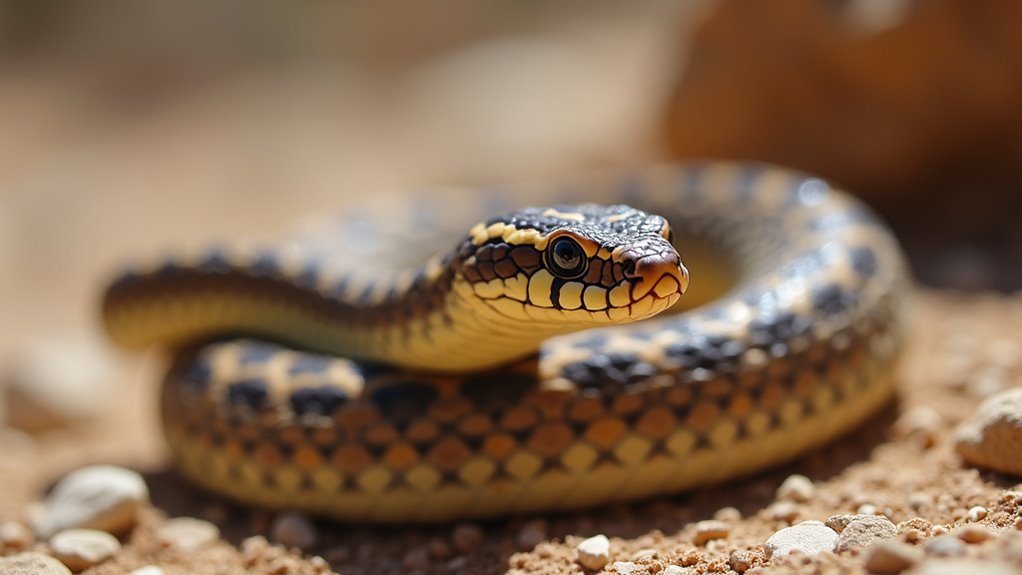
Despite their modest size, carpet vipers represent one of Afghanistan’s deadliest threats with their potent hemotoxic venom and lightning-fast strikes. Known scientifically as Echis carinatus, these aggressive vipers are recognizable by their distinctive zigzag pattern and heavily keeled scales.
You’ll find these nocturnal predators hiding under rocks or in vegetation across Afghanistan’s diverse landscapes, from sea level up to 2,000-meter elevations. This species is notorious for producing a distinctive sizzling sound when agitated by rubbing their serrated scales together. Deadly animals in Ethiopia are also a concern for those exploring the region.
They’re particularly dangerous because they’ll enter human dwellings while hunting small mammals and birds.
If you’re bitten, seek immediate medical attention—their venom causes severe pain, hemorrhaging, and can lead to renal failure or death without prompt treatment.
When exploring Afghanistan’s terrain, avoid tall grass and rock piles to reduce your risk of encountering these small but lethal reptiles.
The Persian horned viper is prominent among Afghanistan’s dangerous reptiles thanks to its distinctive hornlike projections above each eye. You’ll find this venomous snake in Afghanistan’s arid, rocky desert regions where it hunts at night for lizards, small mammals, and birds.
Despite being relatively slow-moving, you shouldn’t underestimate this desert predator if encountered:
This territorial viper typically avoids human contact but remains deadly when provoked. Adult specimens can reach impressive sizes of up to 108cm in length, making them one of the larger venomous snakes in the region.
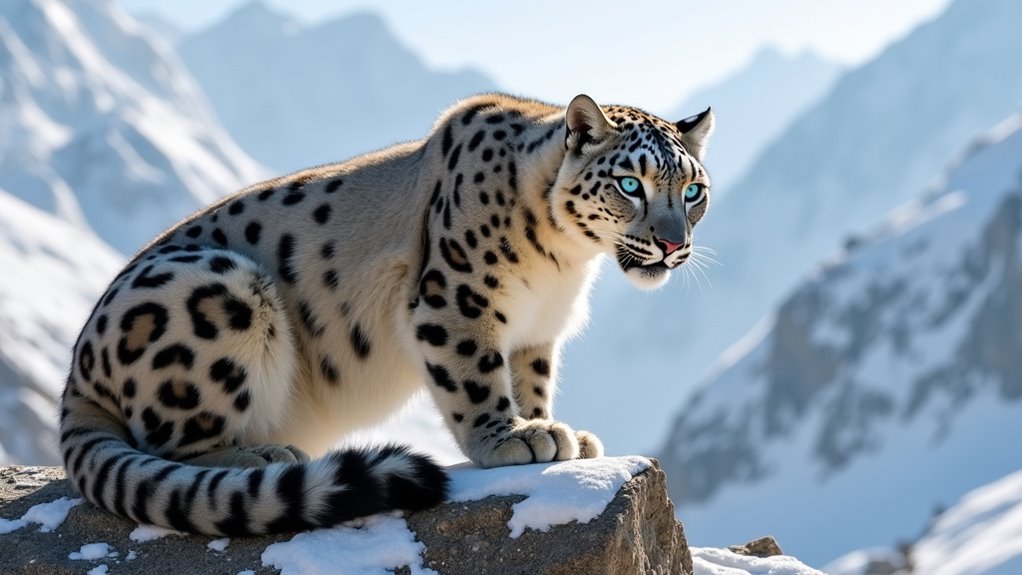
Among Afghanistan’s deadliest animals, snow leopards reign as elusive mountain hunters, combining breathtaking beauty with lethal predatory skills. You’ll find these vulnerable cats in Afghanistan’s eastern mountains, where their smoky-gray coats with black spots provide perfect camouflage against rocky terrain.
With a population of only 100-200 in Afghanistan, these solitary predators maintain large hunting territories where they stalk and ambush prey. These big cats strategically use the broken terrain features for concealment when stalking prey and securing their kills.
Their diet primarily consists of mountain ungulates, though they’ll adapt to smaller mammals when necessary. The Maldives and Seychelles are two popular tropical island destinations, but their beauty and danger make snow leopards a unique draw for adventurous travelers in Afghanistan.
Their powerful build, incredible agility, and hunting prowess make them formidable predators. While human attacks are rare, these cats can be deadly if threatened, especially when protecting territory or offspring.
Hidden beneath Afghanistan’s sandy desert floors, Asian sand vipers pose a serious nocturnal threat to unwary travelers. Also known as leaf-nosed or whiskered vipers, these venomous reptiles inhabit the Dast-i Margo Desert and border regions where Afghanistan meets Pakistan and Iran. The deadliest animals in Saudi Arabia can also be found in other parts of the Middle East.
You’ll find these camouflage experts most active after dark, when they emerge from their sandy burrows to hunt. Their venom derived its scientific name “macmahonii” from British diplomat Arthur Henry McMahon. Their highly toxic venom can cause severe pain and swelling if you’re unfortunate enough to encounter one.
As you’ve explored Afghanistan’s deadliest creatures, you’ve witnessed nature’s dangerous duality. The venom from a Saw-Scaled Viper flows through its victim just as the Deathstalker’s sting paralyzes its prey. You’ll need this knowledge if you’re traveling there—like a map showing both mountains where Snow Leopards prowl and deserts where Persian Horned Vipers hide. Afghanistan’s wildlife demands your respect and caution at every step.